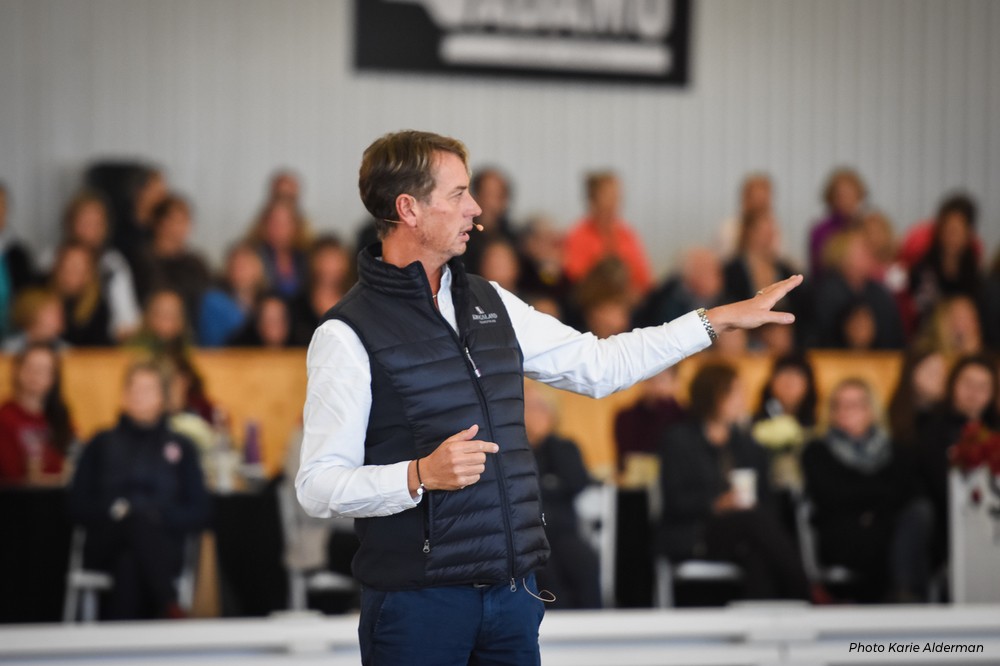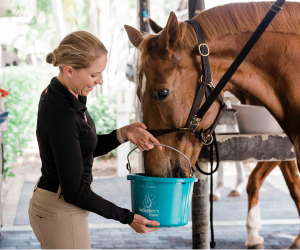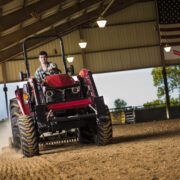How Carl Hester Keeps His Horses

Photography Karie Alderman
Five-time British Olympian and gold medalist Carl Hester doesn’t keep secrets about how he cares for, develops, and trains the horses in his care. He’s even got their daily routine posted on his website. And that’s lucky for us, because the man is a fountain of knowledge. He imparted some of his wisdom during his two-day October clinic at Caledon Equestrian Park in Palgrave, Ontario.
The way that we keep our horses is important. A lot of horses live out. They’re moving. Our vet used to say “the best way to keep a horse healthy is to keep him moving.” They are not supposed to stand still.
On young horses:
“Every day you build up. At seven and eight (years old), the horses should be getting to a level of self-carriage, where they really start to develop that as well as the movement.
We break our young horses to ride at three-and-a-half and we bring them in that autumn. Three-and-a-half is good enough to actually see how they’re going to move and what their temperaments are like. We don’t put shoes on them. If all goes well, and they are very well behaved, then we do about six weeks (of training). And then we turn them away and we bring them back into work again when they are four. If nothing has gone wrong, and everything goes right, (around the age of) nine or ten, you can expect them to reach Grand Prix around those ages, depending of course on their talent and on their natural ability.”
The daily riding routine:
We each have a rider at home, Charlotte (Dujardin) and I. These girls get on, they take the horses around the field for about 15-20 minutes. They go do a bit of hill work and just walk, then they come in the arena and stretch the horses for 20 minutes – on the long rein, trot and canter, trot and canter, transitions, and then Charlotte and I will get on them and then train them for about 25 minutes. Then we stretch them and the girls take them around the field again to get their muscles relaxed, get rid of all that lactic acid. Then they come in from the field, get washed and then get turned straight out from there. That’s how we do a session.
A session can actually be an hour and a half with a rider on, but it’s only going to be 25 minutes of schooling. That is more than enough and especially, if you’ve got riders who know what they are doing. (The horses are worked) Monday and Tuesday, hack Wednesday, and work Thursday-Friday.
This is the way I was brought up to do it, but it’s also caused by the fact that, believe it or not, dressage riders can’t make a living at riding horses.
So on Thursday (through) Sunday, and in the afternoons, Charlotte and I have to go off and teach. Go help other people, all those sort of things. That’s why we only ride four mornings per week. I think the horses learn like that. What they do on one day, they’ve usually picked up by the second day, then they get an easy day. Do the same thing again, teach them something, the next day they get an easy day. It’s really like working with the horse’s mental abilities as well. People presume you just school them all the time, if you’re a dressage rider.
But what do you do when a horse gets to Grand Prix? You can’t continue schooling it at Grand Prix level all the time.
So for me, it’s a lot about fitness. Once the horses get to Grand Prix, we concentrate on how to keep them fit. That is with hacking and hill work and trotting and cantering, and we use the water treadmill. We do a lot of water treadmill with the older horses. That’s how we do it.”


